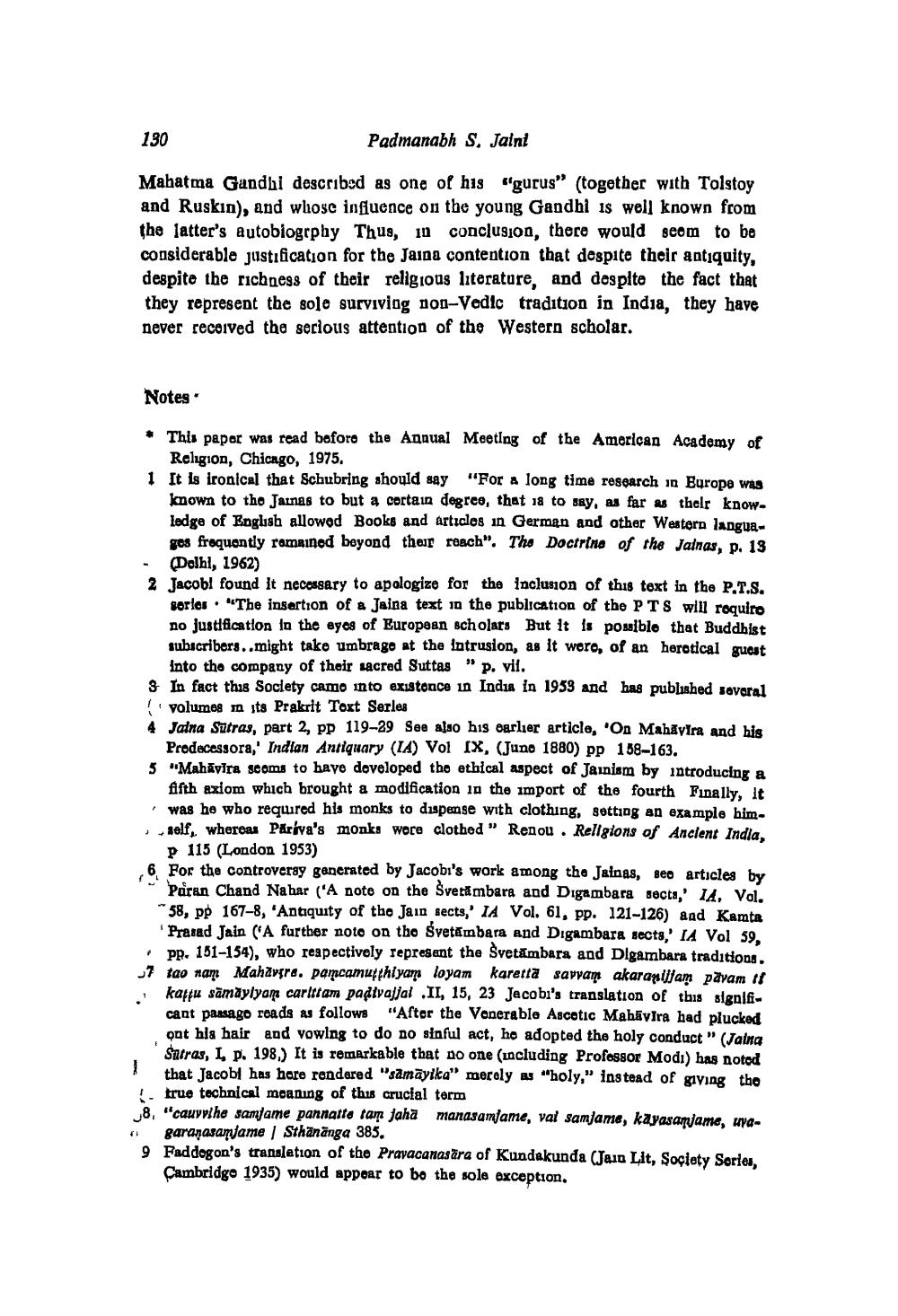________________
Padmanabh S. Jaini
Mahatma Gandhi described as one of his "gurus" (together with Tolstoy and Ruskin), and whose influence on the young Gandhi is well known from the latter's autobiogrphy Thus, in conclusion, there would seem to be considerable justification for the Jaina contention that despite their antiquity, despite the richness of their religious literature, and despite the fact that they represent the sole surviving non-Vedic tradition in India, they have never received the serious attention of the Western scholar.
130
Notes.
* This paper was read before the Annual Meeting of the American Academy of Religion, Chicago, 1975.
1 It is ironical that Schubring should say "For a long time research in Europe was known to the Jainas to but a certain degree, that 18 to say, as far as their knowledge of English allowed Books and articles in German and other Western languages frequently remained beyond their reach". The Doctrine of the Jainas, p. 13 (Delhi, 1962)
2 Jacob! found it necessary to apologize for the inclusion of this text in the P.T.S. series "The insertion of a Jaina text in the publication of the PTS will require no justification in the eyes of European scholars But it is possible that Buddhist subscribers..might take umbrage at the intrusion, as it were, of an heretical guest into the company of their sacred Suttas " p. vii.
3 In fact this Society came into existence in India in 1953 and has published several volumes in its Prakrit Text Serles
4 Jaina Sutras, part 2, pp 119-29 See also his earlier article, 'On Mahavira and his Predecessora, Indian Antiquary (IA) Vol IX, (June 1880) pp 158-163.
5 "Mahavira seems to have developed the ethical aspect of Jainism by introducing a fifth axiom which brought a modification in the import of the fourth Finally, it
was he who required his monks to dispense with clothing, setting an example himself, whereas Pariva's monks were clothed" Renou. Religions of Ancient India, p 115 (London 1953)
"
6 For the controversy generated by Jacobi's work among the Jainas, see articles by Paran Chand Nahar ('A note on the Svetambara and Digambara sects,' IA. Vol. 58, pp 167-8, 'Antiquity of the Jain sects,' IA Vol. 61, pp. 121-126) and Kamta Prasad Jain ('A further note on the Svetambara and Digambara sects,' IA Vol 59, Pp. 151-154), who respectively represent the Svetambara and Digambara traditions.
?
7 tao nam Mahavire. pamcamutthiyam loyam karetta savvam akaranlijam pavam it
.'
E
kartu samaylyam cartitam padivajjal .II, 15, 23 Jacobi's translation of this significant passage reads as follows "After the Venerable Ascetic Mahavira had plucked ont his hair and vowing to do no sinful act, he adopted the holy conduct" (Jaina Satras, I, p. 198,) It is remarkable that no one (including Professor Modi) has noted
1 that Jacobi has here rendered "samayika" merely as "holy," instead of giving the true technical meaning of this crucial term
8, "cauvvihe samjame pannatte tam jaha manasamjame, vai samjame, kayasamjame, uvagaraṇasamjame | Sthänänga 385.
41
9 Faddegon's translation of the Pravacanasara of Kundakunda (Jain Lit, Society Series, Cambridge 1935) would appear to be the sole exception.




